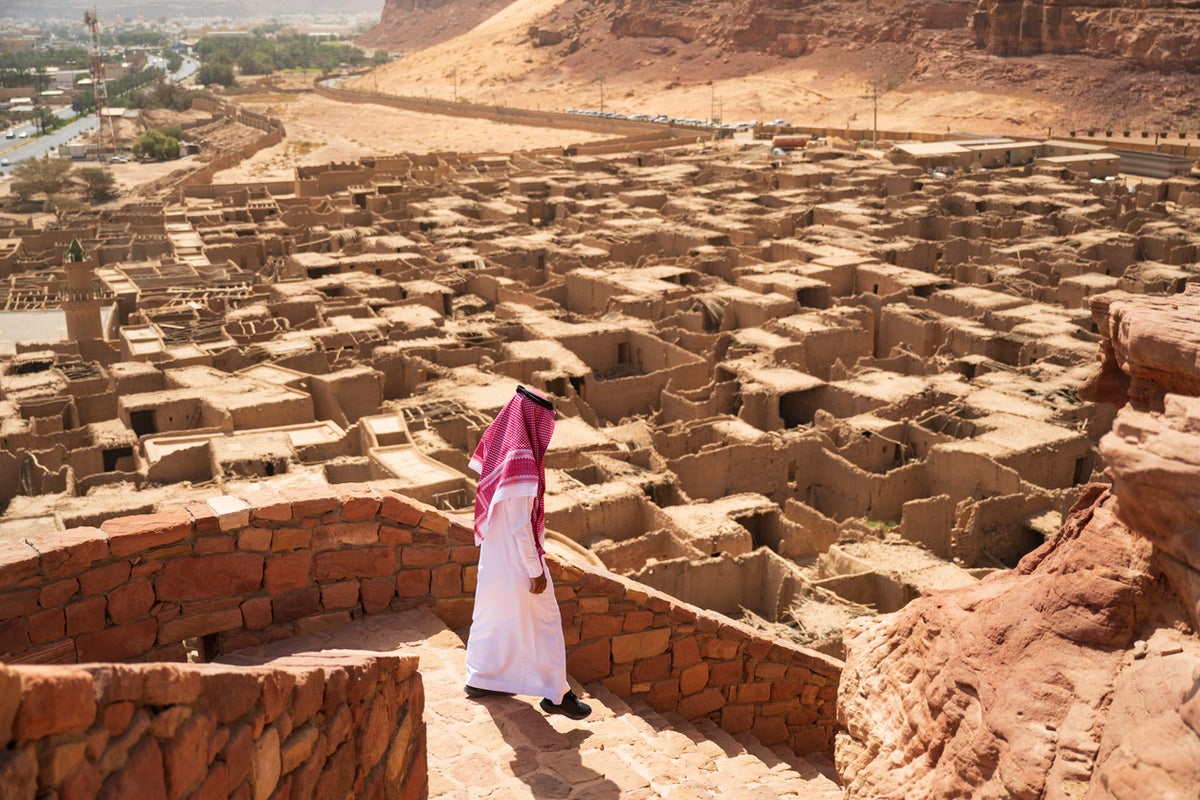
This article first appeared in our partner site, Independent Arabia
Myths and legends were our ancestors’ chief source of amusement and escape in times before the internet, the television or the radio. The most captivating of these folk stories are those with a hint of the supernatural, especially those related to ghosts and spirits known as “jinn”.
In Omani folklore, the “jinn” are often associated with specific geographical locations. There are legends of a “valley of jinn” that men are afraid to venture into, and of a “city of jinn” where the mysterious creatures are said to dwell.
One such city riddled with stories of jinn is Bahla, located in the heart of the Omani desert, over a hundred miles from the capital, Muscat. The city, one of the largest in the Ad Dakhiliyah Governorate, is also among the oldest human settlements in the Gulf Sultanate.
Supernatural beings
Bahla is a uniquely charming oasis surrounded by palm trees, with abandoned houses made of mud bricks dotted around its landscape. However, widespread myths about the presence of jinn, said to be supernatural beings distinct from humans and angels who live alongside mankind, and legends about camel-eating hyenas and spirits that turn men into donkeys, prompted many Omanis to name Bahla the "city of jinn". Thus, it has become an isolated area locals rarely visit.
Unesco heritage site
Bahla Fort was classified as a Unesco World Heritage site in 1987, making it the first Omani landmark to be added to the list. The listed area encompasses the entire Bahla Oasis, including the Bahla Wall and all the architectural, archaeological and cultural landmarks and monuments it contains, whether tangible or intangible. According to local tour guide Hamad Al Rabaani, “Inside Bahla Fort, dating back to the Middle Ages and a listed World Heritage site, we believe that jinn are God’s creation, therefore they are not strange”.
One of the popular myths surrounding Bahla is that supernatural forces built an eight-mile wall around the city in one single night, to protect it from invaders. Speaking to Independent Arabia, the 55-year old tour guide added, “There is a myth of two sisters from among the jinn. One of whom built the wall, while the other created an ancient irrigation system for the crops”.
The idea of jinn has a significant presence in Arab culture; few places, however, are as strongly associated with the jinn as Bahla. The tour guide narrates that one old woman used to hear someone milking her cow after midnight. But whenever she went to check, she found no one there. Hamad added, "Jinn can be heard but never seen, because your mind is incapable of comprehending the idea".
Fear of disrepute
When silence falls after midday prayers in Bahla’s old souq, some residents anxiously discuss the topic of jinn, for which the town is infamous, fearing how this might tarnish its image. But Mohammad al-Hashemi, a seventy-year-old resident of Bahla, says that throughout most of his life he has been influenced by beliefs around the jinn, and as a child he heard stories about flame-spewing hyenas roaming the desert in search of camels to devour.
He told AFP, "They used to warn us not to go out after sunset because of the magic”.
Deep in the Arabian Peninsula
Dr. Ali Olomi, Assistant Professor of History at Loyola Marymount University in Los Angeles elaborates, “Oral traditions and ancient texts indicate that jinn stories are prevalent in the farthest areas of the Arabian Peninsula. Oman and neighbouring Yemen, located at the Peninsula’s southernmost, are both renowned not only as ancient lands with significant historical importance, but also as lands of jinn".
He adds, "In Bahla, there are stories of imaginary blazes and fires, shifting mystical desert storms, and buildings constructed by supernatural beings”.
The geographical isolation of this region, encircled by desert and the Hajar Mountains, contributed to the spread of these myths. Dr. Olomi points out that “the presence of jinn in places like Bahla is a valuable source of insight into the history and culture of the Arabian Peninsula. These are the stories of a people who lived in remote areas with little connection to other communities and a profound awareness of the natural world around them."
Growing doubt
Despite the many myths about jinn in the oasis, a generation of younger Omani is not convinced of their existence, including 24-year old Mazen Al Khateri, who considers the legends “stories told by our ancestors in the past. We don’t know whether they are right or wrong".
However, 30-year old Hassan believes that these rumours about the oasis still hold weight. He says, “My family would never allow me to go to Bahla. Rumours say it is the city of jinn, where these creatures enjoy more freedom”.
Bahla’s history
Bahla Oasis is located in the Al Dakhiliyah Governorate of the Sultanate of Oman. It is the ancient name given to the area that extends from the south of the mountains west of Bahla, to Izki. Wadi Bahla borders the oasis in the west, while mountains surround it from almost all sides. Rivulets flow into the valley, and its location has helped it become a bridge between the neighbouring areas, especially considering its close proximity to ancient cultural sites in the Omani state of Ibri.
Archaeological sites
The oasis is notable for its proximity to numerous ancient archaeological sites, such as those found in Bisya on the banks of Wadi Bahla, where excavations unveiled the presence of circular defensive structures built of stones. Also nearby is Salut, considered one of the most famous sites in the ancient history of Oman.
It is worth noting that the excavations conducted by the Sultanate’s Ministry of Heritage and Culture in Bahla Fort in 1993 and 1997 revealed significant findings, including the discovery of various settlements. A broken terracotta statuette of a knight riding a horse was found, featuring influences from the Sassanian dynasty period, along with an artefact made of steatite. In addition, a large pottery jar for storing dates or collecting honey, and pieces of local pottery and Chinese porcelain were also discovered.
Reviewed by Tooba Ali and Celine Assaf







